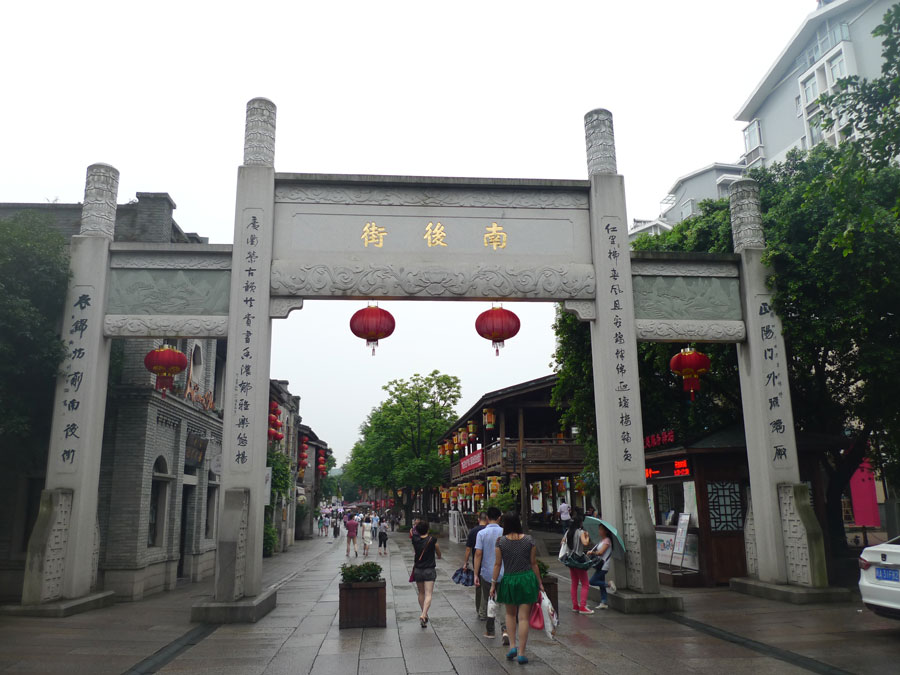 |
|
The three alleys are Yijin Alley, Wenru Alley and Guanglu Alley, and the seven lanes are Yangqiao Lane, Langguan Lane, Ta Lane, Huang Lane, Anmin Lane, Gong Lane and Jibi Lane. The South Backstreet Memorial Arch marks the axis of Fuzhou. [Photo: CRIENGLISH.com]
|
Centrally located in the city of Fuzhou, the Three Alleys and Seven Lanes is a well-known historical and cultural block.
Construction of the 40-hectare block began during the Jin Dynasty and was completed in Tang Dynasty. The Three Alleys and Seven Lanes reached its greatest prosperity in Ming and Qing dynasties.
True to its name, the block consists of three alleys, seven lanes and an axis street. The three alleys are Yijin Alley, Wenru Alley and Guanglu Alley, and the seven lanes are Yangqiao Lane, Langguan Lane, Ta Lane, Huang Lane, Anmin Lane, Gong Lane and Jibi Lane. The South Backstreet Memorial Arch marks the axis of Fuzhou.
"Lanes" are referred to differently, depending on which region of China you are visiting. For example, "Xiao Jie Dao" means "little street," while "Hu Tong", "Nong Tang" and "Zhai Dao" all roughly mean "narrow pathway." All these names have originated from the Chinese people's daily lives. Though lanes in Fuzhou do not zigzag as those of southern China's waterside towns, they boast a profound cultural history. Over 100 great figures throughout China's modern history came from these lanes: Lin Zexu (the famous official of late Qing Dynasty), Shen Baozhen (the father of ship administration), Yan Fu (the great thinker), Lin Xu (one of the six members of the Hundred Days' Reform), Lin Juemin (the hero of the Huanghuagang Uprising), Bingxin (the famous female writer) and Deng Tuo (the famous writer).
We recommend:
